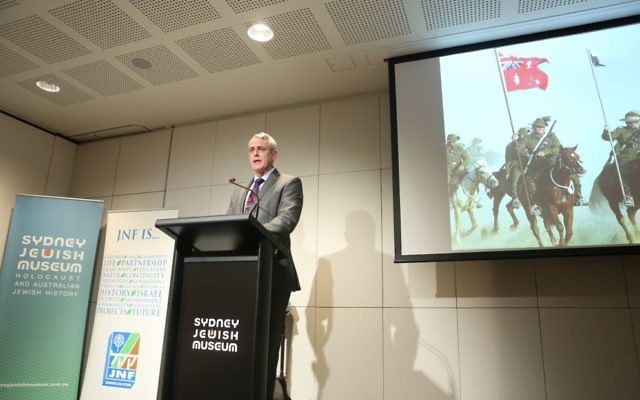Bringing the Battle of Beersheva alive
Erenst Pauls' words and pictures form the backbone of a new exhibition called “In Their Steps” at the Sydney Jewish Museum presented by JNF Australia.

YOUNG Trooper Ernest Pauls from the 12th Australian Light Horse regiment not only rode in the famous mounted infantry charge that captured the strategic Negev town of Beersheva almost 100 years ago, he also took photographs, drew maps and wrote detailed diary entries to document the lead-up and execution of this vital offensive, which marked the beginning of the end of Ottoman rule in Palestine.
His words and pictures form the backbone of a new exhibition called “In Their Steps” at the Sydney Jewish Museum presented by JNF Australia, the custodian of the Anzac Trail in Israel.
At the launch on April 20, Australian War Graves director Ken Corke said the excellent exhibition brings alive the story behind the battle “by delivering it through the eyes of individuals who were there”.
Corke added the fascination Australians have for this battle “is still very evident”.
“With the exception of the dawn service conducted at Gallipoli in 2015, none of the others [WWI Anzac Centenary events] had captured the same level of interest in attendance that we are currently seeing for the commemoration of the centenary of this battle, to be held at the Beersheva War Cemetery on October 31 of this year,” Corke said.
Pauls wrote of the charge: “We lined up behind a set of hills and came out at a gallop … shock tactics they call it, and very successful.
“Two lines of our men went straight on and the third took up a dismounted assault on the front line defences.
“The yelling, surging, seething, galloping men of the 12th went … into Beersheva, capturing large forces before the enemy had time to realise we had attacked at all.”
Over 30 Anzacs died during the charge, and 40 others were killed during support operations – all are buried in Beersheva.
On November 2, 1917 Pauls wrote “All today we have been on salvage work and collecting our dead comrades, a very painful task.”
Pauls’ grandson, Robert Unicomb, told The AJN at the launch, “It’s amazing Ernest did all these things at 24 – it puts modern day life’s problems into perspective.”
The three-month exhibition is supported by the Australian Light Horse Association, the Department of Veterans Affairs and the family of Trooper Percy Townsend, who also rode in the charge.
Townsend’s great-granddaughter, Eliza Bullivant, said “everything has so much thought put into it – I’m really pleased”.
SHANE DESIATNIK

comments